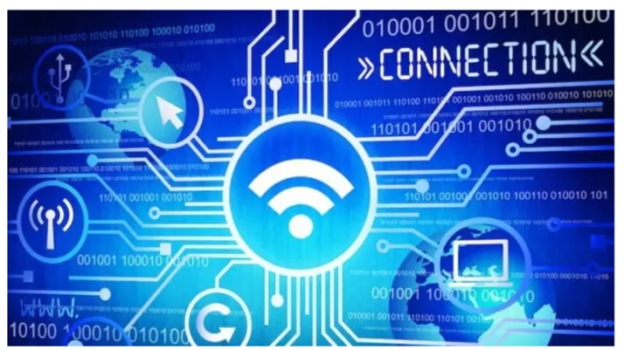K
Kathleen Martin
Guest
For all the hard work and big talk, the IoT market has struggled to deliver on its grand promise of ‘massive’-scale industrial change. Make no mistake; IoT sensing, married with AI sense-making, is the means to digital transformation – and the way to industrial revolution. IoT was supposed to be the tech movement that changed the world, by connecting machines, processes and people, and making enterprises smarter, greener and richer.
It was supposed to make the world better, in other words. And it was supposed to be easy – cheap to connect and quick to scale. Ericsson and Cisco said a decade ago the IoT market would reach 50 billion connected devices by 2020. That deadline has come and gone; the Swedish vendor’s last state-of-the-market review said there were a quarter of that number (12.4 billion) at the end of 2020, and there will be about half (26.4 billion) by 2026.
But the lion’s share in the period – as much as three quarters – will use shorter-range tech like Wi-Fi and Bluetooth, not optimized for the kinds of battery-operated fit-and-forget solutions the IoT industry is supposed to stand-up. To work, these solutions require low power wide-area (LPWA) connectivity; to scale, they need ready coverage, available everywhere, and also available cheap – so the business case for digital change becomes a ‘no-brainer’.
However, despite progress in lots of areas, there is a disconnect between the capability and availability of IoT-native tech solutions – and specifically of the LPWA candidates on which the market has placed its bets. The model is broken; building national IoT networks has failed, so far, as made clear by new headlines about the sale of Sigfox and the reduction of public LoRaWAN (in France), as well as the interminable cold-start that has slowed cellular IoT.
Enter companies like Emrit, who are pushing mass deployments of Helium, the fastest-growing IoT network on the planet, and a proof of concept for a distributed, crowd-sourced infrastructure model – which will, in time, underpin the way all manner of edge infrastructure is built and managed. Its network is constructed of privately-owned LoRaWAN hotspots, providing global LPWA connectivity for IoT tracking and monitoring sensors in homes and offices, ports and factories, cities and states, and all points between.
But its disruptive nature is in its commercial business architecture, rather than its IoT tech roots; Helium uses blockchain as a distributed exchange ledger for IoT data transactions, as well as a reward ledger for carrying the IoT traffic. In other words, hotspots owners are ‘paid’ in crypto credits – specifically in HNTs (Helium native tokens) – for mining crypto data on their network infrastructure. Helium has hit upon the best commercial use case for blockchain.
Continue reading: https://www.rcrwireless.com/20220314/internet-of-things/how-blockchain-is-revolutionizing-iot
It was supposed to make the world better, in other words. And it was supposed to be easy – cheap to connect and quick to scale. Ericsson and Cisco said a decade ago the IoT market would reach 50 billion connected devices by 2020. That deadline has come and gone; the Swedish vendor’s last state-of-the-market review said there were a quarter of that number (12.4 billion) at the end of 2020, and there will be about half (26.4 billion) by 2026.
But the lion’s share in the period – as much as three quarters – will use shorter-range tech like Wi-Fi and Bluetooth, not optimized for the kinds of battery-operated fit-and-forget solutions the IoT industry is supposed to stand-up. To work, these solutions require low power wide-area (LPWA) connectivity; to scale, they need ready coverage, available everywhere, and also available cheap – so the business case for digital change becomes a ‘no-brainer’.
However, despite progress in lots of areas, there is a disconnect between the capability and availability of IoT-native tech solutions – and specifically of the LPWA candidates on which the market has placed its bets. The model is broken; building national IoT networks has failed, so far, as made clear by new headlines about the sale of Sigfox and the reduction of public LoRaWAN (in France), as well as the interminable cold-start that has slowed cellular IoT.
Enter companies like Emrit, who are pushing mass deployments of Helium, the fastest-growing IoT network on the planet, and a proof of concept for a distributed, crowd-sourced infrastructure model – which will, in time, underpin the way all manner of edge infrastructure is built and managed. Its network is constructed of privately-owned LoRaWAN hotspots, providing global LPWA connectivity for IoT tracking and monitoring sensors in homes and offices, ports and factories, cities and states, and all points between.
But its disruptive nature is in its commercial business architecture, rather than its IoT tech roots; Helium uses blockchain as a distributed exchange ledger for IoT data transactions, as well as a reward ledger for carrying the IoT traffic. In other words, hotspots owners are ‘paid’ in crypto credits – specifically in HNTs (Helium native tokens) – for mining crypto data on their network infrastructure. Helium has hit upon the best commercial use case for blockchain.
Continue reading: https://www.rcrwireless.com/20220314/internet-of-things/how-blockchain-is-revolutionizing-iot

